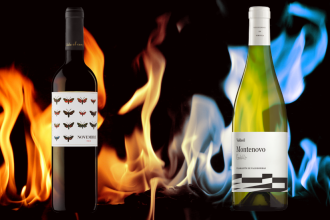West Coast wine isn’t just about California anymore. Though we still hold the Golden State’s bottles near and dear to our hearts, things are (literally) starting to look up. While Oregon has become synonymous with world-class Pinot Noir and savory Pinot Gris, look just a little further north and you’ll find an array of diversity amongst the wines of Washington State. With over 30,000 acres planted, a strong urban winery scene, and 14 designated AVAs, there’s a lot to discover in this northwestern, grape-growing hotspot. Today, we’re focusing in on the state’s most southwestern (and most fun to say) appellation: Walla Walla.
Washington’s Walla Walla AVA gets its name from the river valley in which it’s found. The appellation was created in 1984, with boundaries re-designated 17 years later. The appellation itself is unique, in that part of its territory actually spills over into northern Oregon. What started as just 60 acres in the early 1980s has vastly multiplied to over 2,800 acres – an impressive leap for a relatively new appellation!
The soils of Walla Walla are essential to the quality of wine produced in the appellation. A mixture of sand and loess creates well-draining soil with low fertility, making for ‘quality over quantity’ style grapes. Despite its northwestern location, the climate of Walla Walla is dry and sunny, with large diurnal temperature swings. These drastically hot days, followed by chilly nighttime temperatures, allow grapes to reach optimal ripeness, while maintaining a strong backbone of acidity.
When it comes to Walla Walla, red grape varieties are king. The region is dominated by Cabernet Sauvignon, claiming 40 percent of the region’s plantings. Merlot ranks second, covering approximately 25 percent of vineyard space. The region’s Syrah production is on the rise, gaining traction across the entire AVA; other Rhone varieties, Carmenere, and even a bit of Sangiovese are also beginning to hold a strong regional presence. Over 120 wineries exist in the region, which divides itself into four parts: downtown, west side, east side and south of town. Our suggestion? Rent a car, designate a driver, and go visit them all.
Aside from its wines, Walla Walla is known for its sweet onion production, which contributes to a handful of local food and wine pairings. The plush, savory characteristics of the bottles, rounded out by supple, firm tannins, paired with the savory, tangy quality of onion-loaded meat or vegetable dishes is a match made in heaven. Next time the craving for bulb-shaped vegetables and full-bodied reds strikes, you know exactly where to look!








